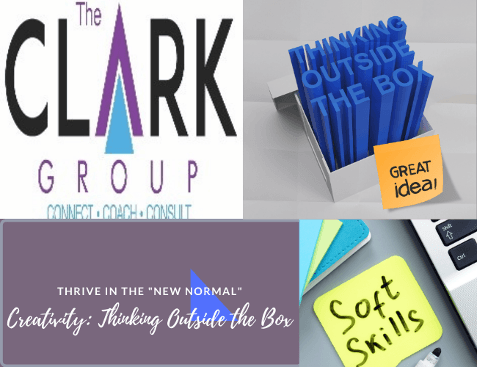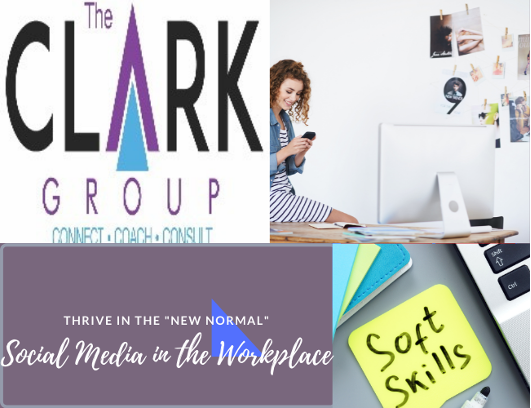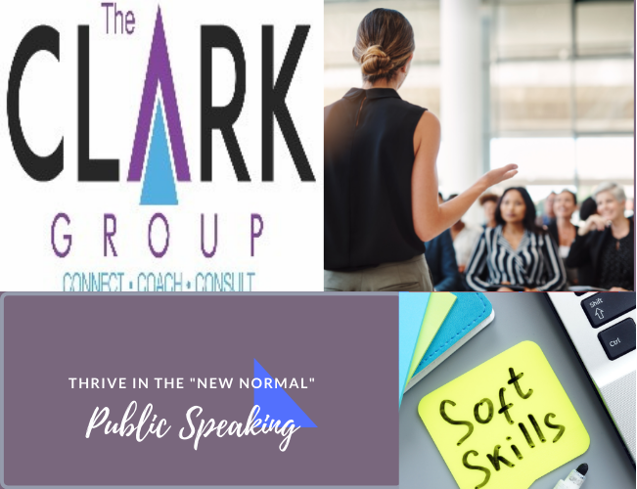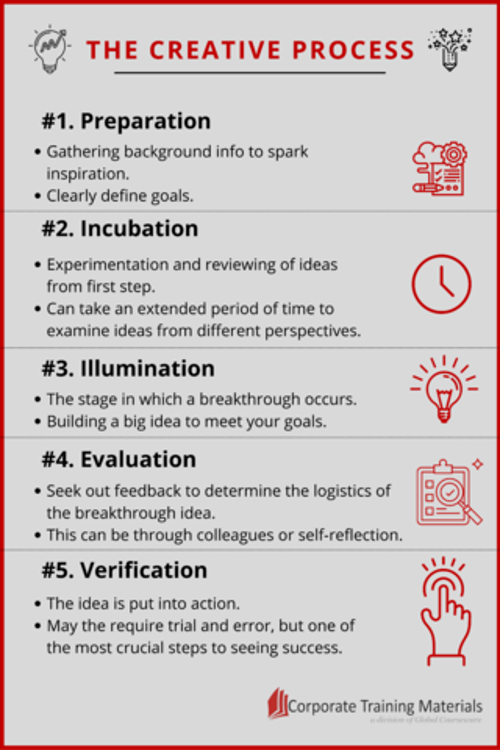THINKING OUTSIDE THE BOX: HOW TO CULTIVATE A CREATIVE WORKPLACE

THINKING OUTSIDE THE BOX: HOW TO CULTIVATE A CREATIVE WORKPLACE
With all the structured systems and procedures in place at your organization, it can be easy to let creativity fall by the wayside in a corporate setting. But the truth is, creativity is crucial to having your workplace function optimally. Creativity promotes innovations and brings new ideas into your organization that can save time and bring prosperity. Below is our quick guide to thinking outside the box and cultivating a creative workplace.
CREATIVITY IN THE WORKPLACE: MYTH BUSTING
First things first, there are many misconceptions that cause people to hold back on creative potential solutions. To set the record straight, below are some of the most common myths about creativity in the workplace – busted.
Myth #1: “Creativity is an inherited trait.”
People often believe that creativity is a genetic trait with which you either have or don’t have. This is an extremely common misconception. Everyone has the ability to be creative, and by believing that you are not born creative, you hold yourself back from discovering your full potential. When you let go of this myth, you may even surprise yourself with the ideas that can emerge.
Myth #2: “Creativity is only for people in artistic careers.”
Creativity is often thought of to be exclusively linked to artistic expression. Art cannot exist without creativity, but this is also true in the context of business growth and innovative solutions. Creativity is often initially undervalued in fields of study that are not focused on artistic expression, but it is a critical skill required for any organization to grow. A business requires new strategies and products to succeed, which is not possible without creative processes.
Myth #3: “Creative ideas are only thought of and executed by one individual.”
When reflecting on historical breakthrough inventions, this work is commonly accredited to one individual. Creative developments are rarely generated by one person. Most breakthrough creations come from a team effort that requires the diverse knowledge of a collection of individuals. This myth disregards collaborative and supportive efforts that are collectively put together by a team.
Myth #4: “Creative ideas only come from one ‘Breakthrough Moment.’”
It is often believed that the best breakthrough moments happen from a flash of inspiration, or unexpectedly. The truth that breakthroughs stem from information in the early preparation stages of the creative process that remain in the subconscious mind. That “breakthrough moment” actually comes from an extended process of knowledge being gathered, and goals being set.
Myth #5: “Financial Incentives will make my team more creative.”
The idea that bigger incentives will increase motivation and creativity is incorrect. In fact, financial incentives will typically lower creativity and lead to more harm than good. However, if you are hoping to motivate your team to think creatively, there is a strong link between intrinsic motivation and increased creativity. When there are no external pressures, it’s easier to be absorbed in your work instead of being focused on money or praise as an outcome.
FOLLOWING THE CREATIVE PROCESS
As we said, in order to have a breakthrough moment, there is some work that needs to be done first. Creative thinking is a process that goes beyond waiting for an idea to magically appear. The below steps will better prepare you to form proper solutions and effectively solve problems.
Preparation - The first stage in the creative process is the preparation stage. This stage involves gathering background information, and absorbing knowledge from various resources. The consumption of this information will ignite inspiration that will help with accomplishing creative problem solving. This is also the time to clearly define your goals.
Incubation - The second stage in the creative process is the incubation stage. This stage is all about experimentation and reviewing of the ideas accumulated from the previous stage. There is no set time frame for the incubation period; it could be days or months. At this stage, ideas are examined from different perspectives, which will help set the stage for the illumination period.
Illumination - The third stage in the creative process is the illumination stage. It is at this stage the breakthrough occurs, which can even happen while your mind is focused on something else. All of the concepts and information have finally come together to build a big idea that will help you meet the goal that was set.
Evaluation - The fourth stage in the creative process is the evaluation stage. Now that the breakthrough has happened, it is time to reflect and evaluate the solution. It is advantageous to use both self-evaluation, and the opinions of your colleagues to determine the quality of your creative thoughts.
Some questions you can ask yourself that will help with your assessment include:
· What are some changes I can make to this idea?
· Does this solution align with my vision or goal?
· Will this solution benefit my business?
· Has this solution been done before?
Verification - The final stage in the creative process is the verification stage. After considerable review of the solution, the last step is to put the plan into action. This stage may require trial and error; however, strong work ethic will ensure it gets completed. After a long journey of undergoing the creative process, it is rewarding to see a creative idea implemented.
FOSTERING A CREATIVE WORKPLACE: WHERE TO START
You may be wondering where the best place to start is for encouraging creative thinking. Below of some actionable steps you can take to create an environment that supports creative practices:
Diversity - It is evident that innovation requires expertise from various skill sets. Having a team that consists of different world views, experiences, and interests will provide more insight for creative thinking and problem solving. Diverse minds working together can produce the strongest and most optimal outcomes.
Effective Feedback - Feedback is great for learning purposes, for suggesting improvements, and for inspiring creative output. For feedback to be most effective and to spark intrinsic motivation, it should be given in an informational style. This allows for a better learning opportunity that encourages creative growth. It will also help to determine which ideas are most valued for the company.
Choosing Flexibility - Employees require the freedom to think creatively when it comes to innovation. Flexibility allows individuals to view ideas from diverse perspectives and form original ideas. Flexible thinkers will have better reasoning when it comes to seeing alternative sides to an argument or debate. This mindset focuses on gaining insight, and on forming new connections.
The Power of Positivity - Recognition and appreciation are powerful motivators to stimulate creativity. Positivity will help to put employees in a proper state of mind to spark creative thinking and idea generation. A positive attitude will allow you to see more possibilities and broaden your focus on the potential that surrounds you.
Creativity and Collaboration - Collaboration and creative thinking coincide with one another. Collaboration involves a group of team members sharing ideas and building upon those ideas to produce superior solutions. In this setting, each individual will be encouraged to offer their thoughts on the challenge that is presented. It is beneficial to gather talented individuals from various departments, while working on a shared goal.
BENEFITS OF CREATIVE THINKING TRAINING
Creativity opens new doors to various opportunities. Creativity training can provide many benefits that will help you meet your organizational goals such as:
Growth Through Creativity - Creativity will drive personal, professional, and economic growth. Employees gain confidence, happiness, and passion for their work, as well as advance collaborative skills with the team.
Boosted Staff Morale - Staff morale is strongly influenced by creative practices in the workplace. Employees should be assured that they are encouraged to share their ideas. A creative work team will listen to the ideas of their colleagues, and lift them up rather than put them down. Creativity will increase staff morale and inspire a positive work environment.
Engagement and Productivity - Employee engagement and productivity are significantly increased when creativity is encouraged. Creativity will remove the fear of failure, which in turn will encourage employees to take on challenges that support the business. When the brain is exploring new patterns and thinking in a different way, it is ultimately more productive. Encouraging creativity will result in employees being emotionally invested in their work; staying interested and engaged.
Competition - Creativity will make a company stand out from the competition. With the business world always changing, it is essential to be aware and responsive to a competitive market. Determining smarter ways to draw attention to consumers and generating unique ideas that will set you apart from other companies is critical to adapt to changes in the evolving market. Creativity is more important now than ever and should be encouraged if you wish to gain a competitive advantage.
Creative Problem Solving - It is inevitable that challenges are going to be presented in the workplace. A creative team is able to determine new, innovative solutions to the challenges they are faced with. Problem solving is all about finding learning opportunities and ways to progress. When diverse minds are working together to conquer obstacles, wonderful solutions can be found.
CONCLUSION
Has our Creative Thinking in the Workplace Quick Guide inspired you to influence your team to be more creative thinkers? Do the benefits of creative thinking training in the workplace intrigue you? Our newest course, Creativity: Thinking Outside the Box goes into even more detail on how to cultivate a creative workplace. Sign up for this course today and start reaping the benefits of a creative corporate team.



Want more information?
Contact Info
All Rights Reserved | The Clark Group

